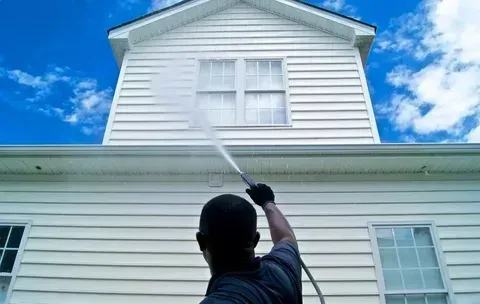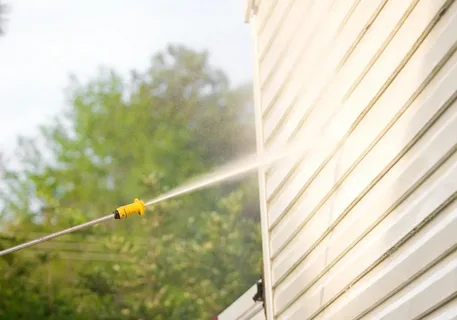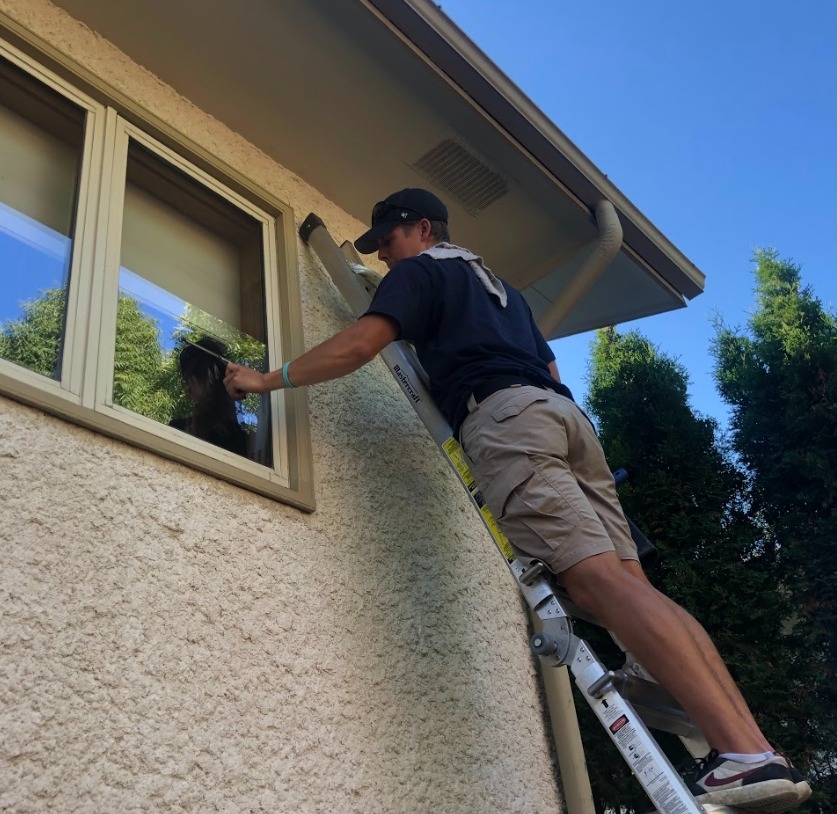
How to Pressure Wash a House
We understand that life has been a roller coaster for everyone lately. Individuals are too busy juggling life between assignments and exams, pursuing their dream job, finding the perfect partner, and more.
Among all the time-consuming tasks of life, keeping your house clean can be one of the most challenging jobs. So, if you're looking for ways to remove dirt from your home, pressure washing is an excellent service that can be done by professionals. For an ideal option for general maintenance, pressure washing in Winnipeg can be done every few years.
You can also perform this cleaning task independently. However, you may require some skills, as pressure washing isn't only about connecting your garden hose to a pressure washer and turning the tap on. Moreover, if you aren't aware of the basic skills required to use this cleaning equipment, you may spray aggressively, which could harm the paint or damage the fibre cement cladding. So, if you don't know where to start, hang on there; we have got you covered!
What is Pressure Washing?
Pressure washing involves cleaning using high-powered jets of water to remove dirt, mud, grime, dust, loose paint, mould, algae, and other residue from surfaces that make your place look dull or unappealing.
The use of pressure washing plays a significant role in cleaning mud or grease that doesn't come off with regular washing. The water jets hold the ability to reach into small corners and remove all the tough dirt. These washers typically produce pressures ranging from 750 to approximately 30,000 pounds per square inch. You can use pressure washing to clean a wide range of surfaces, including decks, patios, gutters, siding, driveways, roofs, fencing, outdoor furniture, sidewalks, grills, and more.
Steps to Pressure Wash Your House
Many individuals are unsure how to clean their house using a pressure washer. They can get confused and may need a little assistance. If you're someone who doesn't know how to remove dirt using pressure, follow these steps for a perfect finish.
Step 1: Prepare Your Equipment
To pressure wash your house, you’ll need the right equipment. Here’s what you’ll need:
Pressure Washer: You can rent or buy a pressure washer. For residential houses, a pressure washer with a PSI between 2000 and 3000 is ideal. Anything higher than this pressure could damage your home's surfaces.
Detergent: Use a cleaning detergent specifically designed for pressure washing. Select one based on the type of surface you are cleaning, such as wood, vinyl, or concrete.
Ladders or Extension Poles: If your house is more than one storey, you may need a ladder or extension poles to reach high areas safely.
Safety Gear: Wear safety glasses, non-slip footwear, and gloves to protect yourself while working.
Nozzles: Pressure washers come with various nozzle attachments, typically ranging from 0 degrees for a very concentrated stream to 40 degrees for a wider spray. Use a wider nozzle for washing large surfaces to prevent any damage.
Step 2: Plan Your Work
Pressure washing is a big task that requires proper planning. Follow these guidelines to ensure an effective cleaning job:
Check the Weather: Avoid pressure washing on extremely windy days or in direct sunlight, as this can cause the detergent to dry too quickly, leaving streaks.
Power Source: Ensure you have access to an electrical outlet for the electric washer to operate the pressure washer.
Water Supply: Ensure the pressure washer is connected to a reliable water source.
Protect Surrounding Areas: Cover any plants, electrical outlets, or furniture near the house with plastic tarps to prevent them from getting damaged by water or detergent.
Inspect Surfaces: Before starting pressure washing, inspect your home’s surfaces for loose paint, cracks, or other issues that the process could worsen.

Step 3: Start with Low Pressure
It’s essential to begin pressure washing at a low setting and gradually increase the pressure as needed. Pressure washing at a high setting can damage your siding, brick, or other surfaces.
Test an Area First: Start by testing the pressure washer on a small, inconspicuous area of your house. This allows you to gauge the pressure and ensure it’s not causing any damage.
Adjust the Pressure: Most pressure washers allow you to adjust the pressure. Begin with a pressure of around 1500 PSI and gradually increase it as necessary. For delicate surfaces, such as wood, keep the pressure low. For concrete or stone surfaces, a higher pressure may be more suitable.
Step 4: Pressure Wash the House
Now that you have the necessary equipment and have planned your work, you’re ready to begin cleaning your house. Follow these steps:
Start at the Top
Always start at the top of the house and work your way down. This ensures that dirt and debris fall to the lower surfaces, which will be cleaned later.
Begin by spraying the roofline, gutters, and eaves. Use a wide-angle nozzle for these areas.
Move slowly across the surface, ensuring that the water is evenly distributed and that the nozzle remains at a safe distance, approximately 12 inches away from the surface.
Wash the Walls
Once you have cleaned the upper areas, move on to the walls of your home. Begin by applying the detergent to the surface, starting from the top and working your way down.
Use a low-pressure setting to apply the detergent and let it sit for 5 to 10 minutes to loosen dirt, grime, and mould. Be careful not to let the detergent dry before you rinse it off.
After the detergent has had time to work, use the pressure washer to rinse the detergent away, working in sections.
Focus on Dirtier Corners
As you wash the walls, pay close attention to areas that might have more stubborn dirt, such as:
Use a mould and mildew cleaner if needed. These can be found at most hardware stores and are designed to break down organic matter.
For tough stains, such as oil or rust, apply a specialised cleaner to the affected area before using the pressure washer.
Wash Windows and Doors
For windows and doors, use a more moderate pressure to avoid damaging the glass or seals. Start at the top and wash in a side-to-side motion.
Avoid spraying directly onto the window seals, as this could cause water to seep into the house.
Use a soft brush attachment to remove stubborn dirt from window screens.
Clean the Driveway and Pathways
Finally, don't forget your driveway and pathways. These areas tend to accumulate dirt, oil, and grease stains, making pressure washing them an effective way to enhance your home's overall appearance.
Use a higher pressure for concrete surfaces, but be mindful of nearby plants and structures to avoid damage.
Step 5: Rinse and Inspect
After pressure washing, take the time to carefully inspect the cleaned areas to ensure that all dirt, grime, and detergent have been removed.
Rinse thoroughly by using clean water to remove any remaining detergent or dirt.
Check for missed spots or areas that need further cleaning; clean them again with the pressure washer.
Conclusion
Pressure washing your home can significantly improve its appearance, transforming a dull, dirty exterior into a shining one. Explore how much to pressure wash a 2000 sq ft house, and while it might seem like a job best left to professionals, taking on this task yourself is entirely achievable with the proper preparation and careful execution. By understanding your pressure washer, planning your work effectively, and following the steps provided in this blog post, you can safely and effectively remove years of mould.
Start by preparing your equipment, then plan how you will perform the task. Begin with low-pressure washing, focusing on the dirtier corners, and then rinse and inspect to ensure that no detergent or dirt remains. If you have a busy routine and you don't get enough time to pressure wash your house, no worries at all; Neighbours Windows have got you covered! We provide exceptional pressure washing services to keep your building clean of mould, dirt, or mud so you can have a comfortable experience.
